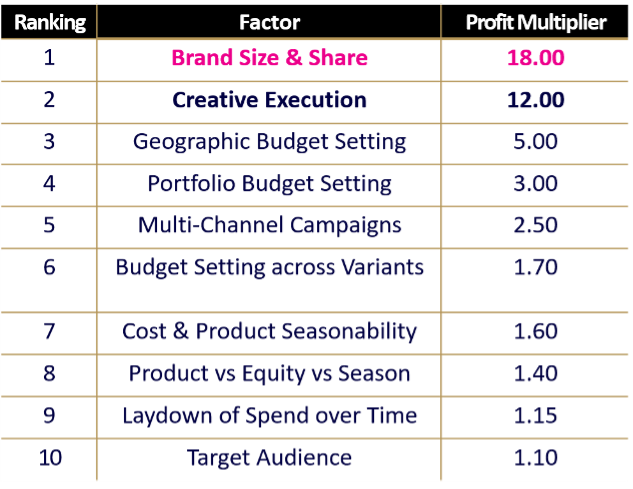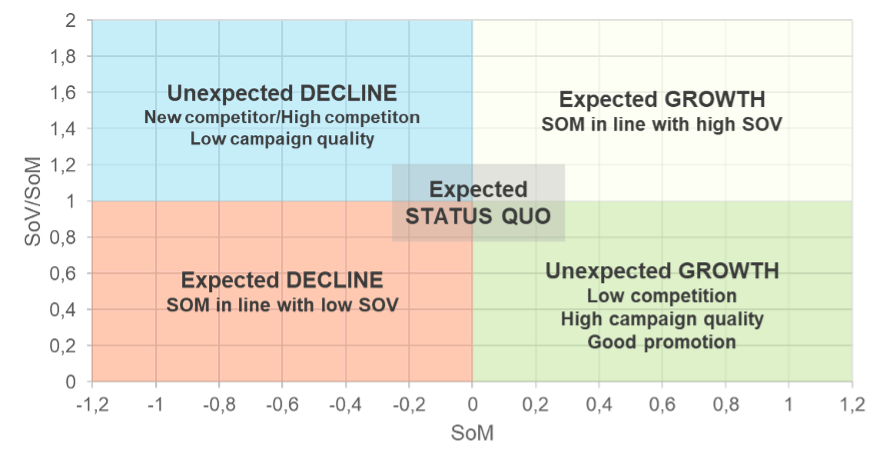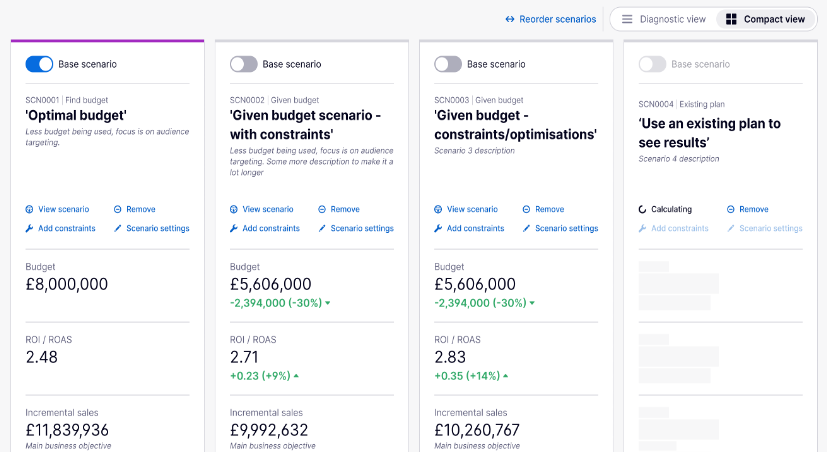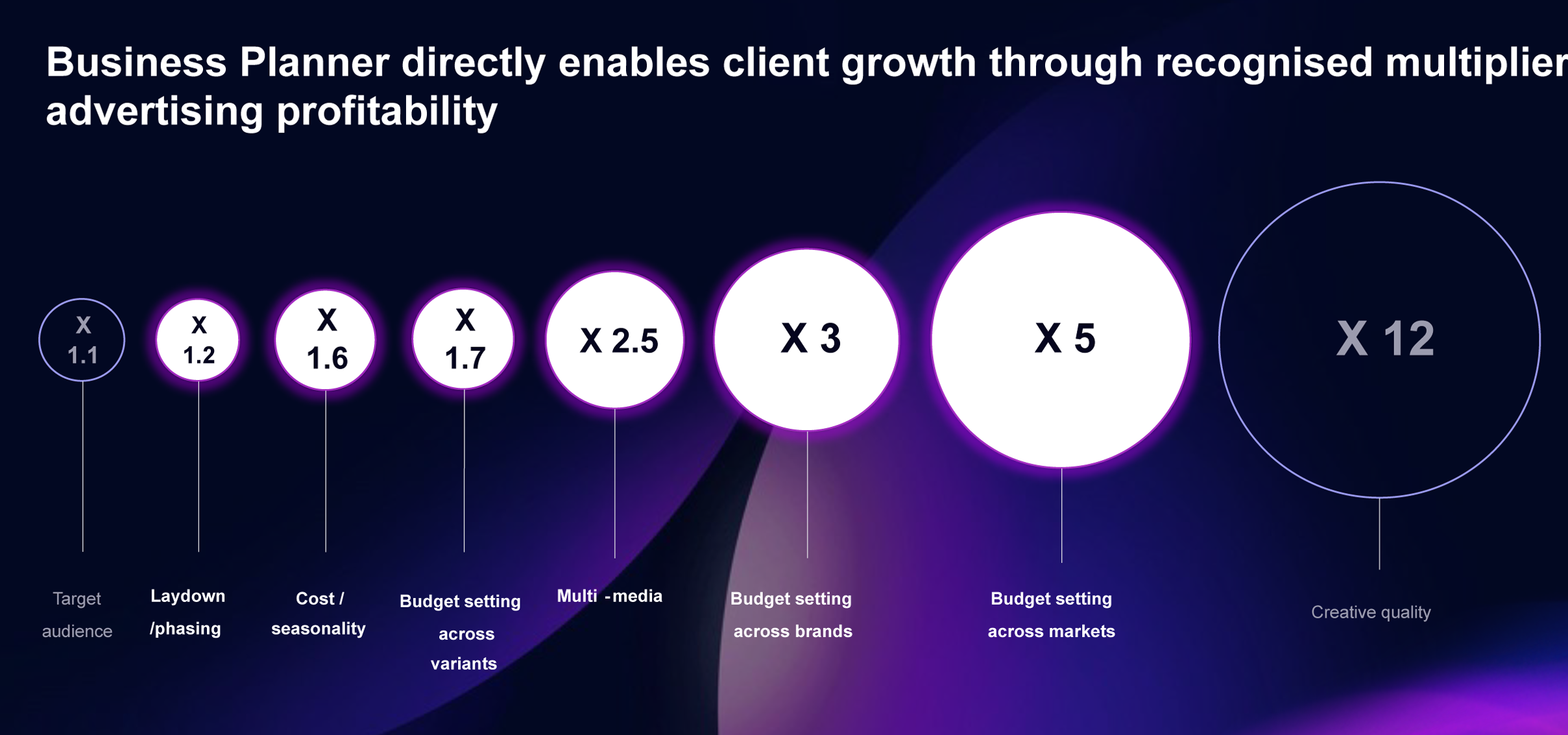Dentsu, as a media agency, stands for a modern media approach. Evidence-based marketing is one of the important pillars of that proposition. In today’s competitive business landscape, organisations often face the challenge of budget cuts. Whether due to economic downturns, strategic shifts, or unforeseen circumstances, managing reduced resources requires adaptability and smart data decision-making.
The Impact of Advertising
Research shows that when a brand stops advertising, significant consequences occur both in the short and long term. Even just 12 months without advertising can be challenging already and expensive to recover from. Brands experience a 16% average decline in sales after one year and a 25% decline after two years (source: Ehrenberg-Bass). While established brands fare better initially, sustained periods without advertising can lead to irreversible sales declines. Therefore, maintaining consistent advertising is crucial for brand health and sustained growth. But when advertisers do need to reduce marketing costs, it makes a lot of sense to partner with the media agency. They can help to optimise the budget.
Top drivers of advertising
To make sure you get the maximum out of your marketing spend, let’s explore the key drivers of advertising profitability. Dentsu’s D2D did extensive research on this topic. This table shows the most important outcomes.

It is clear that brand size has the biggest influence on turning marketing spend into profit. Larger brands tend to have more leverage. Followed by creative execution, well-executed campaigns can amplify the impact of marketing efforts. Budget setting is in the 3rd and 4th place. In this article, we will explore budget-setting strategies in a bit more detail.
At dentsu we typically advise three different methods to excel in budget management.
Method 1: ESOV as an important driver for brand growth
ESOV determines the optimal marketing spend linked to overall business growth. It’s calculated as the share of voice relative to the share of market. An excess SOV (above your SOM) indicates potential market share growth. On average, a 0.5% increase in Share of Market per 10% overscore of Share of Voice can be realised. The actual growth varies based on factors like brand size, life stage, and category.
We aim for a SOV ratio at least as high as the SOM (a ratio of 1). Ratios higher than 1 signal growth, while lower ratios indicate a decline. However, exceptions exist. For instance, high SOV doesn’t always guarantee market share growth; external factors like competition, physical availability or campaign quality matter. Unexpected growth with a low SOV position and increasing SOM can result from low competition, high-quality campaigns, or effective promotions.
By plotting weeks or campaign periods, we learn from unexpected growth or decline. What happened during those periods?

ESOV planning helps brands strategically allocate resources for sustained growth.
Method 2: Sufficiency Planning
Sufficiency planning ensures that investment levels are sufficient to effectively deliver brand and business objectives—more than just the bare minimum. It goes beyond the “just enough” investment and addresses the lowest acceptable media levels.
A ‘from the ground up’ media sufficiency plan is developed to align with key brand goals and address the “Jobs To Be Done” (JTBD). This plan outlines the necessary channels and optimal levels of media weights required to achieve the goals. Here’s how to approach sufficiency planning:
- Start with a Clear Brief: Define your brand’s ambition for the year and identify the JTBD that will drive that ambition.
- Allocate Investment Levels: Determine investment levels based on the brand’s JTBD. Consider a Media Sufficiency approach and be open to recognizing opportunities.
- Validate Investment Proposals: Evaluate proposed investments against established growth indicators and benchmarks.
Sufficiency planning ensures that your investment aligns with your brand’s objectives effectively:

Method 3: Econometric Modelling
Marketing Mix Modelling (see: the revival of Marketing Mix Modelling) is able to accurately reflect the direct impact and incrementality (ROI) of media spend on KPIs such as sales and brand awareness. Using these models, strategists and marketers can optimise their media plans to maximise desired KPIs across the whole marketing funnel.
In most cases, the outcomes of the model are used to optimise budget setting and with a proper scenario planner in place, it helps to show stakeholders different scenarios for different budgets. Most importantly it shows what will happen with sales if there is less media budget available.
See this example of dentsu’s business planner tool:


Also other budget-related questions can be answered:
- How much budget is needed to achieve specific sales goals? Or to maintain consistent brand awareness levels?
- How much sales can be achieved with the current media budget, and how would this number change with a 10% increase in budget?
- What is the contribution of owned channels vs paid channels on sales?
- How do changes to the media mix or detailed plan impact sales or brand awareness?
Budget planner based on econometric modelling empowers marketers to make informed budget decisions and drive effective resource allocation.
To sum up: These three methods all show different ways to excel in budget management. What the best option is for you, depends on different factors. Leverage our expertise and reach out to us for tailored advice.



